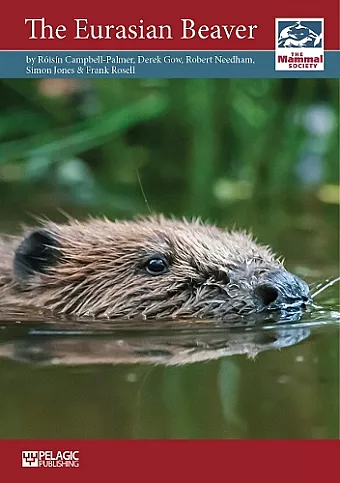The Eurasian Beaver
Robert Needham author Simon Jones author Derek Gow author Roisin Campbell-Palmer author Frank Rosell author
Format:Paperback
Publisher:Pelagic Publishing
Published:19th Jan '15
Should be back in stock very soon

The Eurasian beaver was near extinction at the start of the twentieth century, hunted across Europe for its fur, meat and castoreum. But now the beaver is on the brink of a comeback, with wild beaver populations, licensed and unlicensed, emerging all over Britain.
As a keystone species, the beaver plays a vital role in the creation of sustainable wetland habitats through its damming activities, providing living opportunities for a broad spectrum of wildlife. Yet as proposals for reintroducing beavers are underway, re-establishing the beaver in Britain is still a controversial issue.
This book presents a case for our future coexistence with beavers by providing factual information on this species that has now passed from national memory, covering the biology, behaviour and ecology of the Eurasian beaver in a British context, from their early history in archaeology and folklore to their contemporary field signs in the wild. This book familiarises readers once again, after almost 400 years of its absence, with the Eurasian beaver, providing essential information on its requirements in our human dominated landscape.
This book is for those with a specific interest in beavers and their reintroduction, and for anyone with a general curiosity in natural history, ecology or animal behaviour. It can be used as a field guide to identify beaver field signs and observe beavers in the wild by wildlife surveyors or general land users, or as an introductory guide for anyone with an interest in beavers and how to recognise them.
The authors have been actively involved in the study of beaver ecology, behaviour and reintroduction for many years. They have a first-hand knowledge of beavers in captivity and in the wild in both Britain and a range of other European countries.
The authors provide an update on their experiences direct from the field, the quarantine area and the veterinary table. This fascinating book promotes a future co-existence with beavers in Britain by providing factual information on their biology, behaviour and the habitats they help to generate.
This remarkable, unassuming animal has the capacity to help renaturalise our rivers, re-create areas of wetland, increase biodiversity, provide natural flood defence, protect soils and filter and purify our water.
-- Nick Mott * Staffordshire Wildlife *This admirable little book tells you all you are ever likely to want to know about the beaver. It is illustrated with many photos of the animal and its habitat, with maps showing its distribution and tables of the plants it eats and the signs it leaves. Despite the text being only 44 pages long, the authors cover everything you might want to know about these fascinating rodents.
Beavers are being re-introduced to Scotland and Devon but it is very unlikely that they will find their way to Derbyshire. So you will have to travel if you want to see them for yourself. My only encounter with beavers was on holiday in Estonia. Kath and I stopped in Soomaa National Park and wandered about in the forests finding both felled trees and huge beaver lodges. One evening while walking by a stream, we were startled by the amazingly loud ‘slap’ of a beaver’s tail close to us. This loud noise warns the animal’s family of danger. It’s a remarkable and unmistakeable sound which certainly scared the life out of us! A ripple running down the stream was the closest we came to seeing one.
One thing I had never realised was that Beverley in Yorkshire gets its name from the beaver. And another; that beavers don’t eat coniferous trees though they sometimes fell them to use as lodge-building material.
-- Derbyshire Wildlife Trust * Derbyshire Wildlife TruISBN: 9781784270346
Dimensions: unknown
Weight: 140g
62 pages